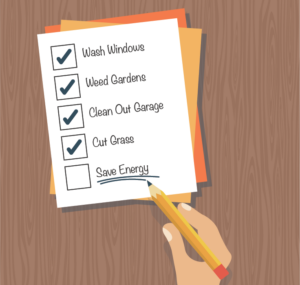What is an Urban Heat Island?
An urban heat island (UHI) is a metropolitan area that experiences warmer temperatures than its surrounding rural areas. Man-made structures such as concrete buildings and paved asphalt roads absorb and re-emit the sun’s heat more than natural landscapes such as forests and bodies of water.
Why is the Urban Heat Island Effect Bad?
The urban heat island effect can lead to health problems such as heat stroke and heat exhaustion, as well as environmental issues like air pollution and climate change.
Heat islands contribute to increased daytime temperatures, reduced nighttime cooling, and higher air-pollution levels. This can impact the health of city dwellers. During periods of extreme heat, the habitual response is to set the air conditioning to full blast. However, this increase can surge electricity usage and put a large strain on the electrical grid.
What Causes the Urban Heat Island Effect?
Green space or plant-life is limited in urban areas, where structures and buildings are highly concentrated. This causes these urban areas to become ‘islands’ of warmer temperatures relative to surroundings. Daytime ambient temperatures in urban areas are about 1 – 7°F higher than temperatures in outlying areas and nighttime temperatures are about 2 – 5°F higher.

What Are Some Strategies for Heat Island Cooling?
Strategies promoting energy efficiency and cold-weather comfort are beneficial for helping homeowners deal with high heat. Energy efficient buildings that consume little power will increase the capacity for the electrical grid to cope with periods of high air-conditioning demand in the summer.
Homeowners and landlords can do their part by minimizing energy waste at home. Well-insulated buildings can keep the heat out in the summer, and keep the cold out in the winter, increasing comfort and reducing the need for consistent air conditioning. Offering energy-saving tips for renters and homeowners can help reduce the impact of urban heat islands on the environment. Such practices can improve air quality and benefit those living in cities.
There are some other strategies cities are implementing to help combat and reduce the effects of urban heat islands. Ways to reduce the heat island effect include:
- Increasing tree and vegetative cover
- Installing green roofs
- Installing cool (mainly reflective roofs)
- Using cool pavements (either reflective or permeable)
- Using energy-efficient air conditioning systems like heat pumps
- Utilizing smart growth (urban planning) practices
- Increasing public awareness of the urban heat island effect
Exploring Heat Loss Mapping as a Potential Solution to the Urban Heat Island Effect
While MyHEAT doesn’t build maps to display heat island effects or vegetation covered “green roofs”, the home heat loss mapping solutions we provide directly support residents in making energy efficient upgrades to a home, increasing comfort and reducing strain on the electrical grid. MyHEAT also understands the importance of vegetation in our daily lives, and to honour this we take part in an annual tree planting event.



